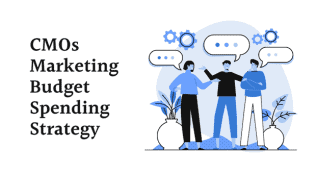More and more people are using ad blockers to avoid intrusive and irrelevant ads. Publishers are increasingly looking for ways to serve ads that users will see. Multi-platform advertising is one way to do this. In a world where people consume content on various devices, it’s more important than ever for businesses to advertise on multiple platforms when using PPC Marketing.
Multi-platform advertising delivers ads to two or more different types of electronic media, which may include television, radio, the Internet, and cell phones. Multi-platform advertising aims to reach as much PPC traffic as possible, with a single ad campaign. Usually, the ads are identical in content, although there may be slight variations for each medium. Multi-platform advertising offers several advantages over other forms of advertising, including greater reach and efficiency.
Additionally, multi-platform advertising ensures that many people see your brand as possible. By using multiple advertising channels, you can create a successful marketing strategy that reaches many potential customers.
Table of Contents
About The Most Popular Marketing Platforms
A business can use many different marketing platforms to reach its target market. The most popular marketing platforms vary depending on the industry, country, and even the target market’s age. One of the most popular marketing platforms is social media. Social media is used by businesses worldwide to connect with their customers. In addition to connecting with customers, social media also allows businesses to share content, promote products and services, and engage with customers.
There are a lot of different marketing platforms nowadays. It can be hard to keep track of them, let alone decide which one is the best for your business. We put together this handy guide to the most popular marketing platforms.
-
Google Ads
Google Ads is one of the first and most popular online advertising platforms. It operates on a pay-per-click (PPC) model, so businesses only pay when people click on their ads. Ads are placed on Google’s search engine results pages, and millions of websites partner with Google.
-
Facebook Ads
Facebook has more than 2 billion active users, making it the world’s largest social media platform. It’s also the most popular marketing platform. Facebook Ads are an effective way to reach your target market. You can create custom audiences based on interests, demographics, and behaviors. Facebook Ads are affordable and easy to use. You can get started in minutes by creating a campaign and targeting your audience.
-
Twitter
Twitter is an excellent platform for building brand awareness because it allows you to share your brand’s story in real-time. You can also share images, videos, and other types of content that will help you to build a strong brand presence on Twitter.
-
LinkedIn
LinkedIn has over 560 million users, and over 90% of B2B marketers use the platform. LinkedIn is beneficial for content promotion. You can share your blog posts and other content on LinkedIn, and you can also use LinkedIn Publisher to create long-form content. LinkedIn Ads are also a great way to promote your content.
How To Make Google Friends With Facebook?
There are many people out there who are trying to figure out how to make Google friends with Facebook. The truth is, it’s not possible. Google and Facebook are two different entities that serve different purposes. While they both have a lot of overlap, they are ultimately two different products.
There are ways to make your Facebook content more visible on Google. One way is to use the correct keywords in your posts. Another way is to make sure your website is optimized for Google search to gain SEO traffic. You can also create a Google+ page for your business.
To make friends with Facebook, Google has announced some new features that will make it easier for users to share content between the two platforms. The first new feature is called “Send to Friend.” This allows users to share articles, videos, and other content with their Facebook friends by simply clicking a button. The second new feature is called “Instant Articles.” This allows publishers to post their articles directly on Facebook; articles formatted as Instant Articles load up to 10 times faster than regular articles and include interactive features such as audio and video players, slideshows, and social media integration.
And maybe the most important aspect of cross-marketing with Google and Facebook is the smart usage of Google Tag Manager and Facebook Pixels. These tools give you the opportunity to present your ads on these based on the traffic you get to your website. If you have Facebook Pixel installed on your website, it gives you the opportunity to target users from the website on the Facebook platform, this is a powerful tool that every marketing manager needs to have knowledge of.
The Art Of Remarketing
Remarketing is a form of advertising that allows businesses to target customers who have previously visited their websites. It’s a powerful tool because it allows businesses to reconnect with potential customers who may have been interested in their product or service but didn’t make a purchase.
There are several different types of remarketing, but the most common is email remarketing. This involves adding customers to an email list after they visit your website and then sending them targeted ads based on their interests.
Bottomline
Multi-Platform Ads are a great way to stay top-of-mind with your customers and enhance SEO traffic to increase sales. This article provides a guide to the most popular marketing platforms and remarketing; if you want to learn more about remarketing or start a campaign, contact us at eMojo, we’d be happy to help.
















